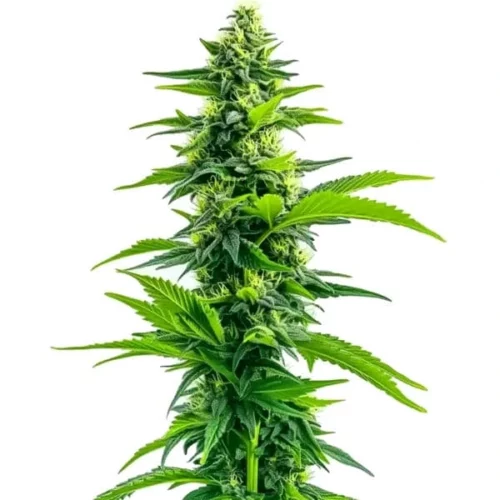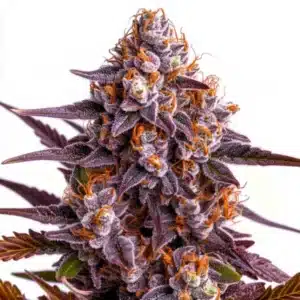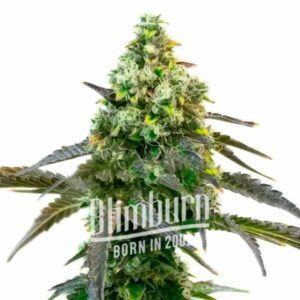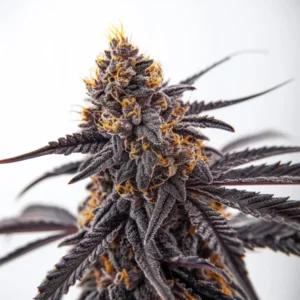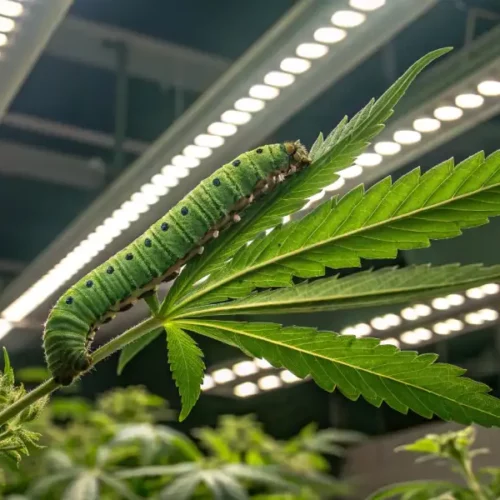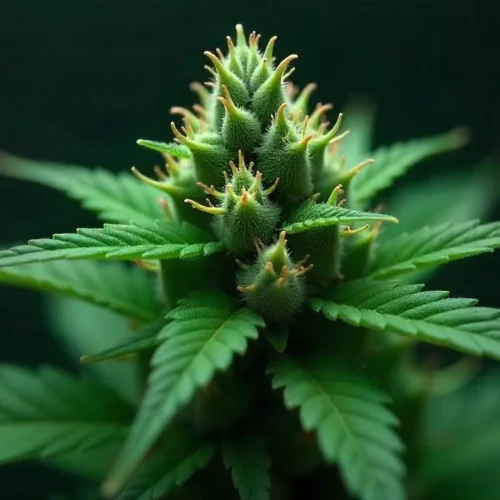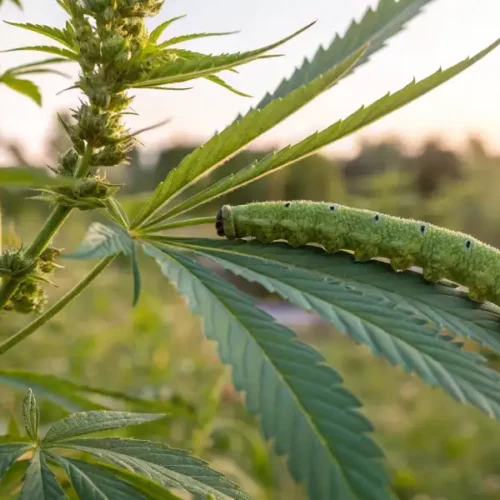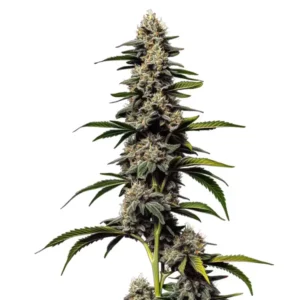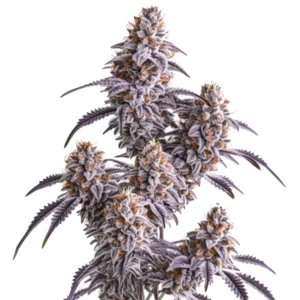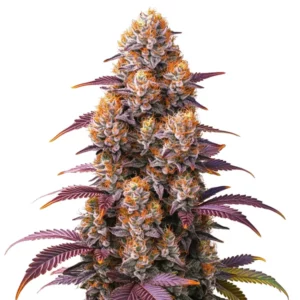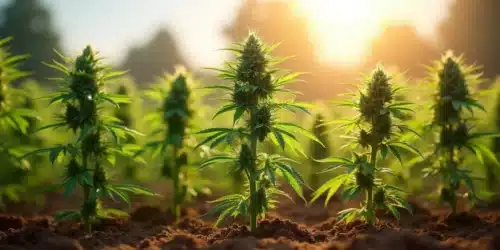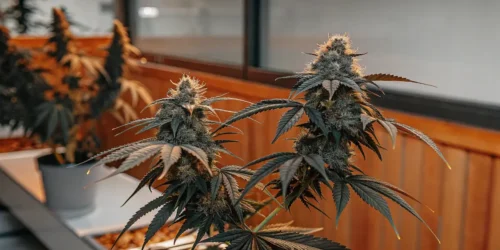The phenomenon of weed leaves turning yellow is a nuanced puzzle that demands careful consideration from seasoned cultivators. This discoloration often serves as an indicator of underlying issues affecting the health and vitality of the plants. Numerous factors can contribute to this perplexing occurrence, ranging from nutrient deficiencies to environmental stressors.
One common culprit behind a weed plant turning yellow is a deficiency in essential nutrients such as nitrogen, iron, or magnesium. Each nutrient plays a crucial role in the plant’s metabolic processes, and a shortage can manifest as discoloration. Careful monitoring of nutrient levels and adjusting fertilizer regimens accordingly is pivotal to address this issue.
Recommended Strains
Acapulco Gold
 THC: 15% - 19%
THC: 15% - 19% Type of seed: Feminized
Type of seed: Feminized Phenotype: Mostly Sativa
Phenotype: Mostly Sativa Day to flower: 10 - 12 weeks
Day to flower: 10 - 12 weeks
Acapulco Gold Autoflower
 THC: 20% - 24%
THC: 20% - 24% Type of seed: Autoflowering
Type of seed: Autoflowering Phenotype: Mostly Sativa
Phenotype: Mostly Sativa Day to flower: 8 - 10 weeks
Day to flower: 8 - 10 weeks
Additionally, pests can wreak havoc on cannabis plants, leading to yellowing leaves. Aphids, spider mites, and other invaders can sap vital nutrients from the plants, causing visible distress. Implementing integrated pest management strategies and regularly inspecting plants for signs of infestation are essential preventative measures.
Environmental factors also contribute significantly to the yellowing of cannabis leaves. Inconsistent watering, extreme temperatures, or improper humidity levels can stress the plants, leading to visible symptoms. Maintaining a stable and well-regulated growing environment is crucial to mitigating these stressors and preserving plant health.
Furthermore, the specific strain’s requirements is imperative. Different cannabis varieties exhibit distinct tolerances and preferences for environmental conditions. Tailoring cultivation practices to align with the unique needs of each strain can significantly reduce the likelihood of leaves turning yellow.
Causes of Yellowing Leaves on Cannabis Plants
There are different reasons why plants turn their leaves yellow. Some reasons are nutrient deficiencies suffered by plants, unbalanced or incorrect pH in both the substrate and the nutrients. Pests and diseases also turn the leaves yellow. Just like excessive watering affects plants and the color of their leaves. We will see all this below and we will also give you some solutions for this problem.
Nutrient Deficiencies – Cannabis Leaves Turning Yellow
Nutrient deficiency is one of the main causes why marijuana plants develop issues like yellowing leaves or spots on cannabis leaves. Each of the minerals that are deficient in weed plants will show a different pattern of behavior and yellowing or spotting on the leaves. For this reason, we are now going to look at each of the nutrient deficiencies and address why are my weed plants leaves turning yellow.
Nitrogen Deficiency
Yellowing starts at the bottom (oldest) leaves and progresses upward. Leaves may turn pale green or yellow.
Nutrient deficiency is one of the main causes why marijuana plants turn their cannabis leaves turning yellow. Each of the minerals that are deficient in weed plants will show a different pattern of behavior and yellow color of the leaves. For this reason now we are going to see each of the nutrient deficiencies and how they are expressed in weed plants.
Iron Deficiency
Interveinal chlorosis, where the veins remain green while the areas between them turn yellow. Leaves may develop a “bleached” appearance. Poor soil drainage, high pH levels, or competition with other nutrients affecting iron absorption.
Magnesium Deficiency
Yellowing between leaf veins, starting at the leaf’s bottom. Sometimes, red or purple streaks may appear. Insufficient magnesium in the soil, imbalanced nutrient ratios, or poor root uptake.
Zinc Deficiency
Yellowing occurs between leaf veins, and the leaves may become distorted or show signs of reduced size.
Inadequate zinc in the soil, imbalances with other nutrients, or pH levels affecting zinc availability.
Other Possible Nutrient Deficiencies
Calcium Deficiency: Can lead to leaf margins curling or burning.
Manganese Deficiency: Similar symptoms to iron deficiency, with interveinal chlorosis.
Copper Deficiency: Causes wilting, leaf distortion, and necrosis.
Sulfur Deficiency: Yellowing starts with new growth, and leaves may become brittle.
Overwatering and Underwatering
Excessive water can lead to root rot as roots drown in waterlogged soil, losing their ability to absorb nutrients. Overwatering can compact the soil, reducing aeration and affecting root respiration.
Signs of Overwatering
Cannabis leaves turning yellow, starting from the base and progressing towards the tips. Overwatering can lead to leaves dropping prematurely. A foul smell emanating from the soil and dark, mushy roots are indicative of root rot.
Mold or fungus may appear on the soil surface due to excess moisture. Some plants may develop blisters or swelling on the leaves due to water retention.
Signs of Underwatering
Leaves lose their turgidity and droop as the plant lacks water pressure. Leaves may curl or become crispy at the edges as the plant tries to reduce water loss. Leaves may yellow, usually starting from the tips and progressing towards the center.
Finding the Right Balance
Regularly observe the condition of the soil and the plant. Adjust watering based on the specific needs of the plant species. Use well-draining soil to prevent waterlogged conditions. This allows for proper aeration and helps maintain a healthy root system.
Establish a consistent watering schedule but adjust it based on environmental factors such as temperature, humidity, and season. Water deeply but less frequently to encourage the development of a robust root system.
pH Imbalance – Cannabis Leaves Turning Yellow
Cannabis leaves can turn yellow due to an imbalance in the pH of the substrate in which they are grown. pH is a measure of the acidity or alkalinity of the growing medium. Cannabis plants tend to thrive in a specific pH range, usually between 6.0 and 7.0 for growing in soil. When the pH strays outside of this range, plants may experience difficulty absorbing essential nutrients, which can manifest in yellow leaves.
Impact of pH on Nutrient Absorption
The pH of the soil or growing medium significantly affects the availability of nutrients to plants. When the pH is too high (alkaline) or too low (acidic), certain nutrients can become less soluble and therefore less accessible to plant roots. For example, at too low a pH, nutrients such as phosphorus, potassium, and calcium can become less available, which can lead to nutritional deficiencies and pot leaves turning yellow. At high pH, elements like iron can become less soluble, also causing nutrient problems.
Testing and Adjusting pH Levels
It is essential to regularly test the pH of your soil or growing medium to ensure it is within the optimal range. pH test kits or electronic meters can be used to measure pH. If an imbalance is detected, the pH needs to be adjusted to correct the situation. Adjustment can be done using specific pH regulating products, such as phosphoric acid to lower the pH or calcium carbonate to increase it. It is important to follow the product instructions and gradually adjust the pH to avoid sudden changes that could stress the plants.
Promos & Deals
Common Pests and Diseases Causing Yellowing Leaves
Pests
Different pests produced by insects can attack cannabis plants during their growing cycle. Different pests produced by insects can attack cannabis plants during their growing cycle. This can cause Cannabis Leaves Turning Yellow plants, a lack of vitality and even the death of the specimens. That is why now we will review what the main pests are and the effects they have on weed plants.
Spider Mites
These tiny insects usually live on the underside of the leaves and feed on the plant’s sap. Their bites cause discoloration of the leaves, leading to yellow spots. The presence of fine cobwebs on the plant is also a common sign of mite infestation.
Aphids
Aphids are small insects that feed on plant sap. Its presence can cause yellowing of the leaves, curling and deformation. They also secrete a sticky substance known as “honey dew,” which can attract fungal growth on the leaves.
Thrips
These insects feed on leaf cells, leaving silvery or tanned areas. Damage caused by thrips can lead to widespread yellowing of leaves. Additionally, their toxic saliva can cause yellow and silver spots to appear.
Whiteflies
These insects feed on plant sap and can transmit viruses. Damage caused by whiteflies includes yellowing of leaves, loss of vigor and poor growth. They may also secrete a sugary substance called “honeydew,” which can promote the growth of black mold on the leaves.
Diseases
Different fungi can cause different diseases in weed plants. You must be careful and protect your plants from possible health damage that they may suffer.
Powdery Mildew
Now, it is necessary to maintain good air flow around the plants, and keep humidity low. In addition, using specific fungicides for powdery mildew are common preventative measures.
Root Rot
Root rot is caused by fungi that thrive in moist conditions and often attack the roots of the plant. Here the yellowing of the leaves, wilting and general bad appearance of the plant are some of the effects of poor roots. To counteract this disease, excessive watering should be avoided, ensure good soil drainage and use substrates that do not retain too much moisture.
Fusarium Wilt
Fusarium is a fungus that can affect the vascular system of the plant. This manifests itself with cannabis leaves turning yellow, wilting and, in advanced cases, necrosis of the leaves. To avoid this, you should use healthy seeds and plants, maintain hygiene in the crop and avoid unnecessary stress for the plants.
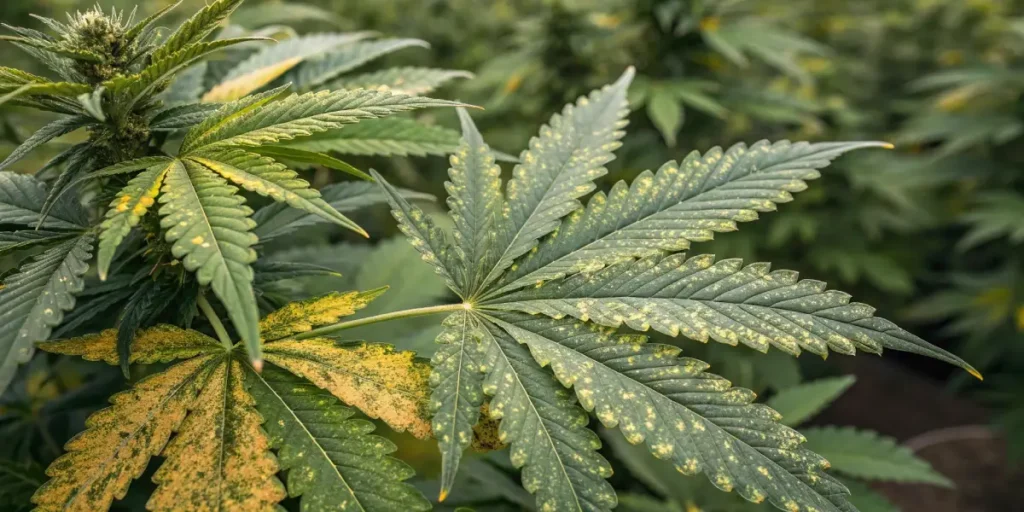
Environmental Factors Affecting Leaf Color
Some growing medium factors such as lighting can affect cannabis plants. This can cause illness and stress that lead to other more serious illnesses. Also the discoloration of the leaves and their yellowing is a symptom caused by light. Now we will see in more depth the causes and effects that it produces.
Light Exposure
Although weed plants need a certain exposure to light for growth and flowering, it is also necessary that the plants are not saturated with light energy. When marijuana plants are exposed to excess lux, different diseases can be caused, with stress being one of the most common. Hence we will see some of the following points below.
Importance of Proper Lighting
Cannabis plants require a specific amount and quality of light for optimal growth. Too much or too little light can cause a variety of problems, including yellowing leaves.
Adequate lighting is crucial for photosynthesis, the process by which plants convert light into energy. Insufficient light can hinder this process, causing nutrient deficiencies and yellowing leaves. On the other hand, excess light, especially in the form of intense heat or prolonged exposure to high-intensity light, can cause stress to the plant, causing discoloration of the leaves.
Signs of Light Stress
Too much light, especially high-intensity light, can cause light stress and lead to the yellowing of leaves. This is often accompanied by other symptoms like leaf curling or a bleached appearance. Intense light, particularly in indoor settings with artificial lighting, can cause bleaching or light burn. This manifests as a whitening or discoloration of the leaves, progressing to yellowing if the stress persists. Excessive light can cause the edges of the leaves to curl upward. This is a defensive mechanism that the plant employs to reduce the surface area exposed to intense light and heat.
Temperature and Humidity
Temperature and humidity are two relevant factors when growing marijuana, which is why here we are going to find out what the ideal parameters are for growing marijuana in relation to humidity and temperatures.
Optimal Temperature and Humidity Levels
Cannabis plants thrive best in temperatures ranging between 20-28 degrees Celsius during the day and around 15-20 degrees Celsius at night. Furthermore, the ideal relative humidity varies between 40% and 60%. These optimal conditions promote healthy plant development and maintain the vibrant green color of the leaves.
Extreme temperatures, whether too high or too low, can stress cannabis plants, leading to leaf discoloration. In hot climates, it is crucial to provide shade and a good ventilation system to avoid heat stress. In cold climates, greenhouse growing techniques or other methods can be used to maintain adequate temperatures.
Dealing with Extremes
You must try not to fall into extremes, that is, not to fall into humidity that is too low or too high. Also, do not fall into temperatures that are too high or too low. That will work against you and cause your plant to get sick. For this reason, it is important that you measure these parameters and avoid disease problems in your weed plants during cultivation.
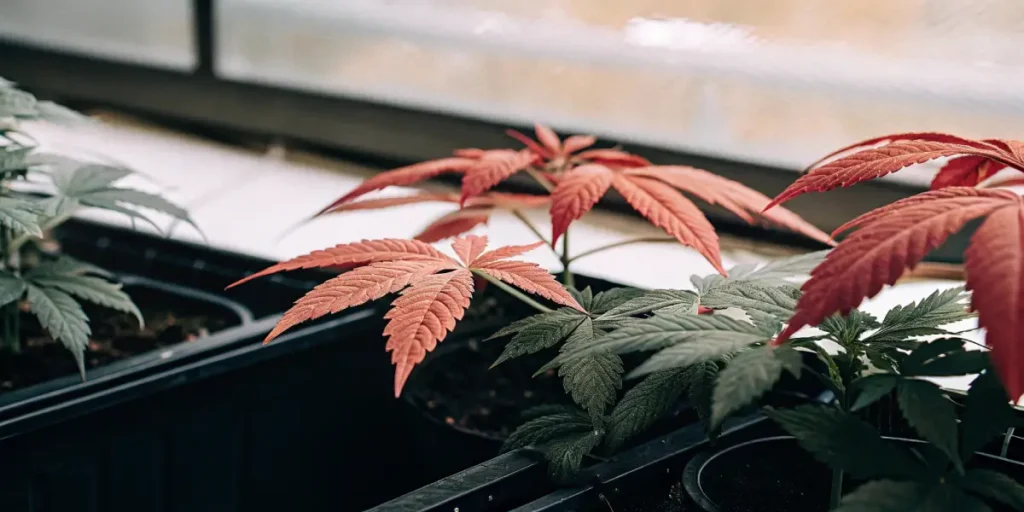
Solutions and Remedies for Yellowing Cannabis Leaves
Obviously, we are not going to abandon you in the process if you have problems with the yellow leaves of your plant. For this reason, here we leave you some simple solutions that you can apply to avoid diseases that affect plants.
Adjusting Nutrient Levels
Use balanced fertilizers and be sure to follow dosage recommendations. Monitor nutrient levels in the soil or growing medium and adjust as necessary.
Watering Techniques – pH Management
Measures and adjusts the pH of water and growing medium. For most cannabis strains, a pH range of 6.0 to 7.0 is ideal.
Pest and Disease Control
Regularly inspect plants for pests and diseases. Use specific pesticides or fungicides as necessary. Maintain a clean environment and prevent the spread of diseases.
Environmental Optimization
Adjust environmental conditions so they are within optimal ranges for cannabis. Provide adequate lighting, control temperature and humidity, and ensure good air circulation.
If you also notice issues such as cannabis seedling leaves to curl down, these same practices of nutrient balance, pH management, and environmental optimization can help address the problem.
FAQs
Why are my cannabis leaves turning yellow?
Cannabis leaves can turn yellow due to several factors, including nutrient deficiencies (such as nitrogen, iron, or magnesium), pH imbalances, overwatering or underwatering, pest infestations, diseases, and environmental stressors like improper lighting, temperature, or humidity. Identifying the root cause and adjusting your growing practices can help restore plant health.
How can I fix yellowing leaves on my weed plants?
To fix yellowing cannabis leaves, first diagnose the underlying issue. Adjust nutrient levels with balanced fertilizers, correct pH imbalances in the soil or water, ensure proper watering techniques, and maintain optimal temperature and humidity. Regularly check for pests and diseases, and optimize lighting conditions to reduce plant stress.
Can light stress cause cannabis leaves to turn yellow?
Yes, light stress is a common cause of yellowing cannabis leaves. Excessive or intense light can lead to leaf bleaching, curling, and discoloration. On the other hand, insufficient light can hinder photosynthesis, causing yellow leaves. Ensuring proper light intensity, quality, and exposure duration is key to preventing light stress.

